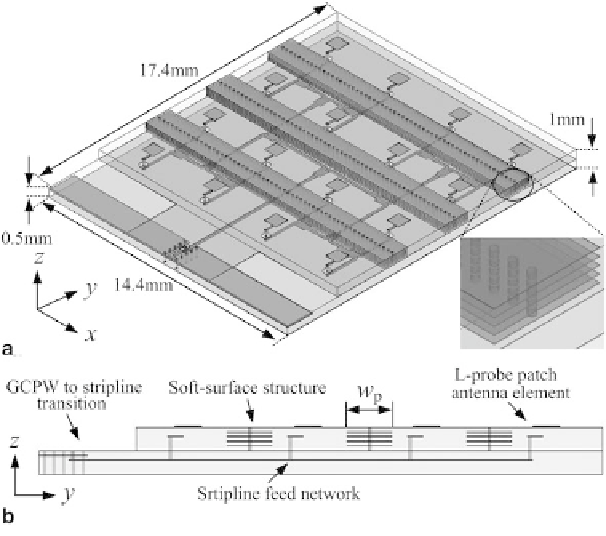Biomedical Engineering Reference
In-Depth Information
Fig. 3
Geometry of the proposed low temperature co-fired ceramic (LTCC) based L-probe patch
array with novel soft-surface structures.
a
3D view,
b
side
view (from [
10
], reprinted with permission
from IEEE)
zero on the surface for wave propagating along the surface [
22
-
24
]. A novel soft-
surface structure is introduced in the LTCC L-probe antenna array to suppress the
substrate surface wave and thus enhance the antenna array radiation performance
without increasing the overall size and requiring additional process. The proposed
antenna array is fed by a SL feed network to separate from the radiation elements.
The effects of the soft-surface structure on the performance of antenna array are
numerically and experimentally investigated by comparing with the conventional
L-probe patch linearly polarized array without the soft-surface structure.
Overview of the Antenna Array
A planar array of 4
4 L-probe patch antenna elements with a novel soft-surface
structure was designed. The proposed antenna array is composed of 16 L-probe fed
patch antenna elements; T-junction feeding network, and GCPW to SL transition
for probe station testing as shown in Fig.
3
. Three novel soft-surface structures
constituted of metal strips on each layer and via fences were inserted in the middle
of the antenna array along the
x
-axis. The value of
w
p
is the metal strip width of
the proposed soft-surface structure. The via fences are composed of a row of vias.
×

Search WWH ::

Custom Search